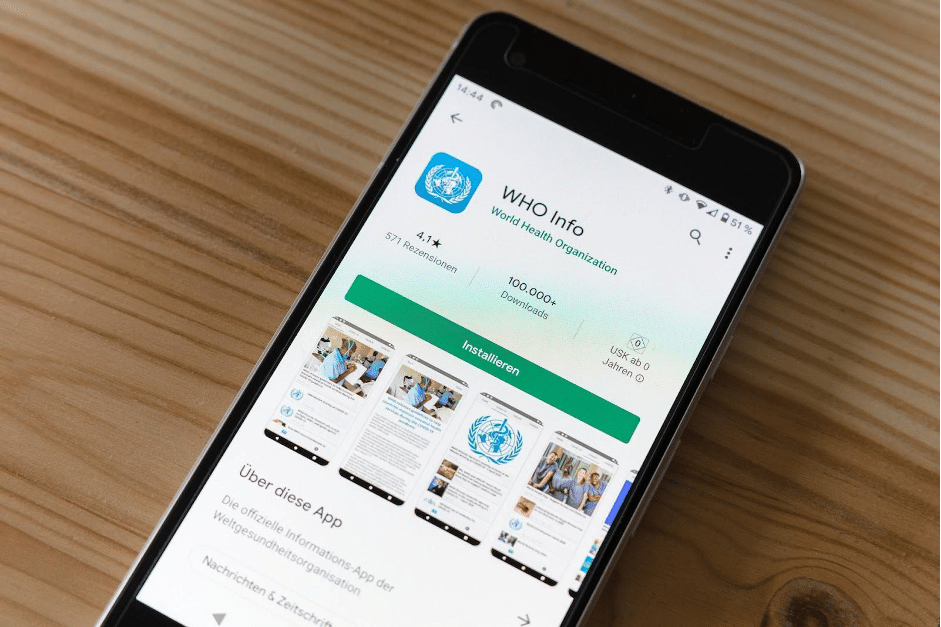The advent of technology has resulted in numerous innovations, and one industry that has greatly benefited is healthcare. Among these advancements, mobile health applications have emerged as significant tools, helping to transform how healthcare services are delivered and received.
Mobile healthcare applications are becoming an integral part of our society. They not only bring healthcare to our fingertips but also offer personalized and timely services, ensuring better health outcomes. This article seeks to guide healthcare business owners on the nuances of this market, essential components of successful applications, the importance of telemedicine app development, evaluation strategies of mobile health applications, and how to establish a successful business framework in this realm.
What are healthcare mobile applications?
Healthcare mobile applications are software programs developed to provide health-related services on mobile devices such as smartphones and tablets. They cover a wide spectrum, including fitness tracking, prescription reminders, telemedicine consultations, patient portals, and more. Over the years, the demand for these apps has skyrocketed and the mobile health application market is forecasted to reach 42.5 billion by 2030.
These applications are contributing to making healthcare services more accessible and convenient to as many people as possible. They have the potential to transform health behaviors, improve health outcomes, and lower healthcare costs.

Constituents of successful healthcare mobile applications
The success of healthcare application development hinges on several factors:
User-friendliness: An app should be easy to use and accessible. Intuitive design can significantly impact user adoption rates and overall satisfaction.
Targeted functionality: The app should cater to a specific health need or behavior, whether it’s managing a chronic condition, maintaining a healthy lifestyle, or scheduling appointments.
Credibility: Users should be able to trust the application. It should have a verifiable scientific basis and comply with health guidelines.
Interactivity: Features that promote user engagement such as personalized reminders, feedback, and social sharing can significantly enhance the user experience.
Privacy and security: The app must adhere to the highest standards of data security to protect user data. HIPAA-compliant encryption is vital in many jurisdictions.
Integration: The app should be integrated with other health systems, such as EHRs, for seamless care continuity.
Digital acceleration: Adoption of the latest digital tools and technologies can streamline processes and improve service delivery.
Strategies for evaluating and selecting healthcare applications
Selecting the right healthcare medical apps for patients or clinicians requires a comprehensive and strategic evaluation process that ensures the app not only meets its stated objectives but also provides a valuable and satisfactory user experience. Below are the expanded strategies that healthcare businesses should consider:
Reviewing scientific literature related to the app: Scientific literature, such as academic articles, research papers, and case studies related to the app, can provide robust insights into its validity and effectiveness. This may involve reviewing the evidence base for the health interventions the app employs, or for the app itself if such studies exist. Studies showing that the app has been tested in controlled environments and shown to be effective at meeting its stated goals are particularly valuable. Also, literature reviews can provide insight into the app’s theoretical foundations, helping to ensure it is based on established scientific principles.
Exploring app clearinghouse websites and app stores: Healthcare app clearinghouse websites are dedicated platforms that vet and categorize healthcare apps, often employing a robust review process. Such websites provide a holistic overview of an app’s features, functionalities, and user experience. Simultaneously, app stores can provide basic information, including the app’s description, developer, user rating, and reviews. Be sure to investigate the app’s update history on app stores to ensure it’s actively maintained.

Reading user ratings and reviews: User ratings and reviews offer a direct window into how the app performs in real-world situations. Look at both positive and negative reviews to get a big picture of the application’s performance. Be mindful, though, that reviews can sometimes be biased or manipulated. Hence, it’s essential to take a balanced approach, considering multiple sources and types of feedback.
Testing the application’s performance and usefulness: It’s critical to evaluate the app firsthand. Test the app’s performance in terms of its features, interface, and general user experience. Check how intuitive the app is to use, whether it provides all the advertised features, how well it performs under various conditions, and if it is accessible to people with different needs. Additionally, it’s important to understand how the app might integrate with your existing healthcare systems and processes, especially if you plan to use it in a clinical setting or recommend it to patients.
Seeking feedback from users: Finally, real-world insights from users, especially those who are part of your target audience, are invaluable. You can gather feedback through user surveys, interviews and form a clear picture of the app’s performance and usefulness. User feedback can illuminate real-world issues or benefits that may not be apparent in testing or apparent from reviews alone. This step is particularly critical if the app is to be widely implemented in a healthcare setting or recommended to a broad patient base.
Using these strategies, healthcare business owners can ensure they select healthcare apps that not only meet their immediate needs but are also sustainable, effective, and appreciated by users in the long term.
Building a successful business framework for medical app development
Building a successful business framework for healthcare mobile applications requires strategic planning around several components. Success factors include a robust value proposition, advanced technology infrastructure, regulatory compliance, efficient marketing strategies, and a sustainable revenue model. Simultaneously, the business should navigate challenges like intense market competition, data privacy concerns, regulatory hurdles, and potential technological glitches.
Value creation and appropriation
Modern healthcare providers are harnessing digital health technologies to create a formidable competitive advantage and multifold value appropriation. This approach translates into improved business outcomes, including profit-making, growth, and enhanced resilience.
A fitting example of this approach is Intermountain Healthcare, which introduced a chatbot named “Scout” in early 2020. By using the bot to navigate calls and concerns about COVID-19 infection, Intermountain Healthcare managed to reduce their call center volume by 30 percent, providing quicker resolutions for customers and more efficient call center management, thus achieving operational excellence and customer intimacy at the same time.
Value-driven business models
Shifting industry dynamics and a need for innovation necessitate new and innovative business models. These models need to generate higher returns while delivering better care. For instance, payers and providers that engage in next-generation managed care models are witnessing superior returns. These new business models typically involve better integration of care, risk-bearing incentives, and the usage of data and advanced analytics.
Challenges and opportunities in e-health startups
E-health startups, driven by information technology, show promise in addressing inadequacies in the current care delivery systems. These startups leverage digital health technologies, including mobile health applications, to add value and offer more comprehensive and convenient services. However, they often face several challenges, such as the need for an appropriate digital strategy and business model, to fully reap the benefits of their investments.
To conclude, building a successful business framework for healthcare mobile applications necessitates a well-rounded approach that incorporates concurrent value disciplines, leverages innovative business models, and effectively addresses the challenges and opportunities presented by the digital era. Embracing a telehealth business framework can provide the adaptability to meet evolving health needs and trends, providing an avenue for sustainable growth.
The Impact of COVID-19 on healthcare innovation
The COVID-19 pandemic brought significant shifts in healthcare, pushing organizations to pivot their business models and services. It accelerated the adoption of digital tools, including healthcare apps, and intensified the provision of remote care.
Furthermore, the healthcare workplace has evolved, with remote collaboration and virtual care becoming the norm. This trend is likely to persist post-pandemic, further emphasizing the importance of mobile healthcare applications.
Moving forward: Innovating in times of crisis
The current healthcare landscape calls for innovation to keep up with changing dynamics. Healthcare organizations need to choose, evolve, accelerate, and extend practices during crises. They should be agile in their operations, ready to adapt to change, and should prioritize innovation for growth.
Mobile healthcare applications are transforming healthcare service delivery and patient experience. They promise a plethora of benefits, including enhanced access, improved health outcomes, and cost reductions. As healthcare business executives, embracing this innovation is critical to staying relevant and driving improvements in healthcare delivery.
As we move forward, it is vital to remember that innovation doesn’t stop at the introduction of an application. Continuous learning, evolution, and adaptation are crucial to meet changing health needs and deliver the most value to patients and clinicians. The ability to innovate in times of crisis is a testament to the resilience of the healthcare sector and a cornerstone for future growth.

